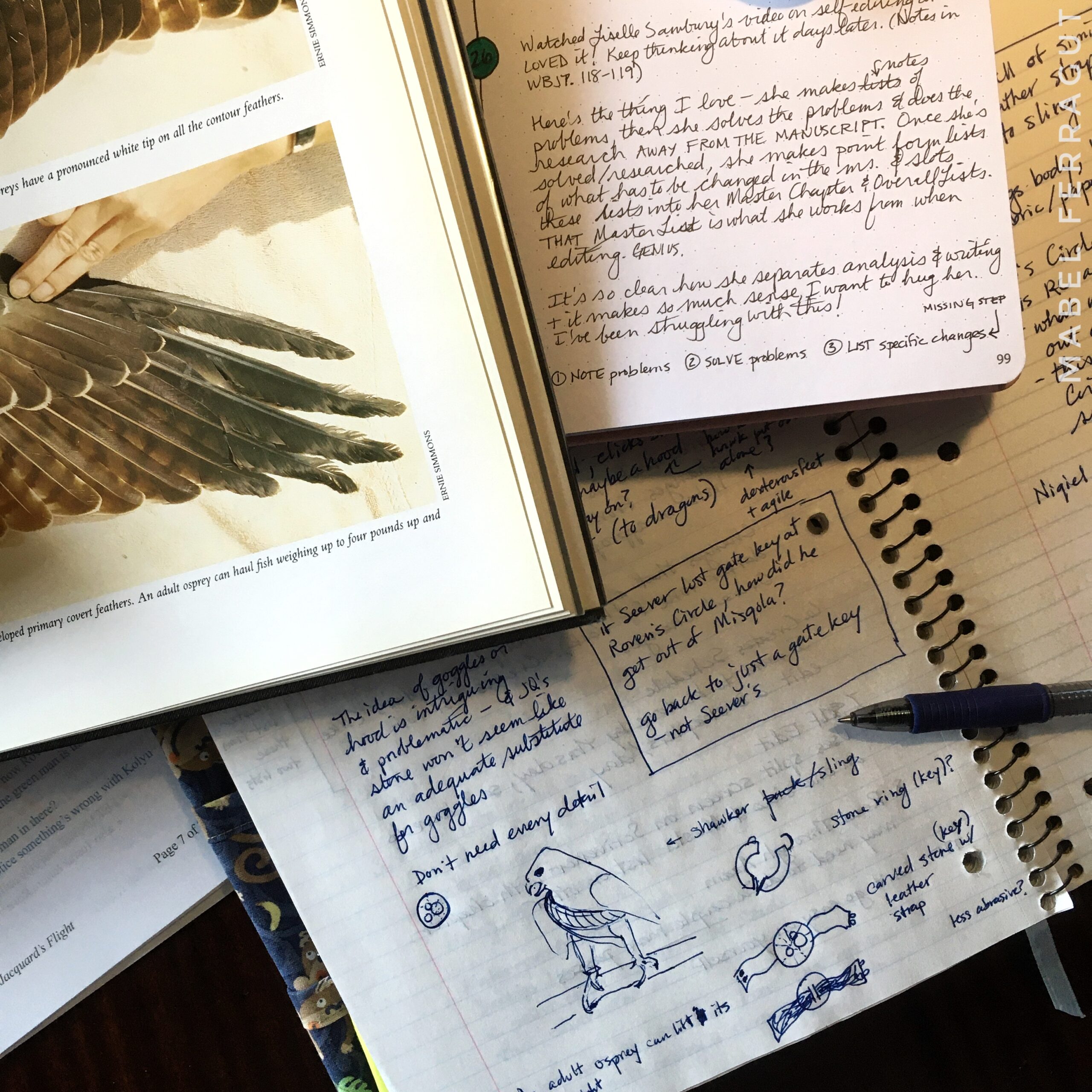This week I watched a YouTube video that sort of blew my mind. It taught me something about writing—a small missing link in my process—that has changed revising for me. It’s amazing to me how something as small as taking an extra step, or breaking things down differently can make such a huge difference.
In her latest video, Liselle Sambury discusses how she self-edits her drafts. After finishing a draft, she reads the whole manuscript, writing a one-sentence outline of each chapter, then noting any high level problems she sees, but making no changes yet. So far, so good. Taking notes without making changes is pretty standard practice. And I’ve been using Jennie Nash’s Inside Outline for my chapter summaries, so I’ve got that too.
Side Note: Chapter summaries are invaluable. They really help you begin to hold the whole book in your head, which is one of the greatest challenges of writing a novel.
The next thing Sambury does is to go through her notes and figure out how to solve each of the problems she documented. Then, and this is the part that threw me, she decides how exactly she will apply those solutions to the manuscript, slotting in notes under each chapter description.
For example, maybe a character arc is flat. You first solve the problem by deciding what the character’s goals are, what conflict they might face, etc. Then, in a separate step, you figure out where in the manuscript this will show up. Where do we first see the character’s intentions? In which chapter does the character run into conflict? How exactly does that show up?
It’s a logical process, and it seems obvious that this is what you should do. But I’ve been making a jumble of it, brainstorming solutions and how they fit into the manuscript at the same time. Sometimes this is okay. But a lot of the time, it confuses me. This is why I’m so excited to separate the process into two steps. It’s already reducing my stress level, and I’ve only started using the technique. Thank you, Liselle!
This isn’t the first time a YouTube video has blown my mind. Years ago I had a similar experience watching a Chris Fox video, in which he describes his outlining process. First he writes a synopses, then pulls out sections of the synopses that he sees as scenes, and sets up a scene list. Wait, what? Scenes are different from a story summary? Yes, of course they are, but until I watched this video, I hadn’t figured that out. Understanding this distinction made a massive difference in my writing process.
You never know when you’ll come across a tidbit of information, a new technique, or a different perspective that will take your writing to a new level. What’s fascinating to me is that a small change to how I organize or think about my process can make such a massive difference. Here’s a shout out to all those generous content creators out there who are helping us all level up.
Is there something that you’ve learned that totally changed your writing or other creative process?


Mabel, I’m going to watch this video! Thank you for writing about it. And I LOVE your website!! I’ve been cleaning mine up and looking for examples of someone doing it right, which you are!! Happy revising. I’m about to start a second draft, so any suggestions on revising are so welcome.
Susan, Thanks for stopping by my website! So glad you like it 💕
Good luck with your website. I’d love to see it once you’re ready to share. And good luck with your second draft. I’m still on my first, and learning so much. First lesson: revising a novel is very different from revising a poem 😅 😳